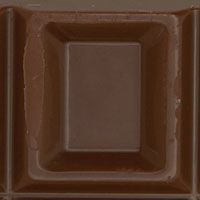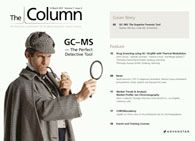Chocolatography
Scientists from chocolate company Hershey, in collaboration with other laboratories, have reported improved methods for determining the amounts of flavanol antioxidants in cocoa and chocolate. Flavanol antioxidants promote a healthy cardiovascular system by deactivating free radicals and helping to reduce blood pressure.

Scientists from chocolate company Hershey, in collaboration with other laboratories, have reported improved methods for determining the amounts of flavanol antioxidants in cocoa and chocolate. Flavanol antioxidants promote a healthy cardiovascular system by deactivating free radicals and helping to reduce blood pressure.
Scientists at Planta Analytica, Connecticut, USA, isolated and separated cocoa flavanol antioxidants on a large scale. Then Hershey scientists, in collaboration with scientists at the Pennsylvania State University-M.S. Hershey Medical Centre, Hershey, Pennsylvania, USA, teamed up to determine the purity of these flavanols using HPLC and Matrix Assisted Laser Desorption Ionization Time of Flight (MALDI-TOF) mass spectroscopy. The isolated compounds were then used as standards in the determination of flavanol cocoa antioxidants in a cocoa powder and a dark chocolate.
“We believe this represents the first large scale purification of standards for flavanol antioxidant determination” said Dr Jeffrey Hurst of the Hershey Centre for Health and Nutrition. “Prior to this, only dimers were commercially available. With a full series of standards, our flavanol determinations are not only more accurate, but the values are much higher, between 40% to 100% higher, than previously published methods using proprietary standards.”
According to Hershey researchers, two tablespoons of natural cocoa have more antioxidant capacity than 3 1/2 cups of green tea, 3/4 cup of blueberries or 1 1/3 glasses of red wine.
This story originally appeared in The Column. Click here to view that issue.
Analytical Challenges in Measuring Migration from Food Contact Materials
November 2nd 2015Food contact materials contain low molecular weight additives and processing aids which can migrate into foods leading to trace levels of contamination. Food safety is ensured through regulations, comprising compositional controls and migration limits, which present a significant analytical challenge to the food industry to ensure compliance and demonstrate due diligence. Of the various analytical approaches, LC-MS/MS has proved to be an essential tool in monitoring migration of target compounds into foods, and more sophisticated approaches such as LC-high resolution MS (Orbitrap) are being increasingly used for untargeted analysis to monitor non-intentionally added substances. This podcast will provide an overview to this area, illustrated with various applications showing current approaches being employed.








